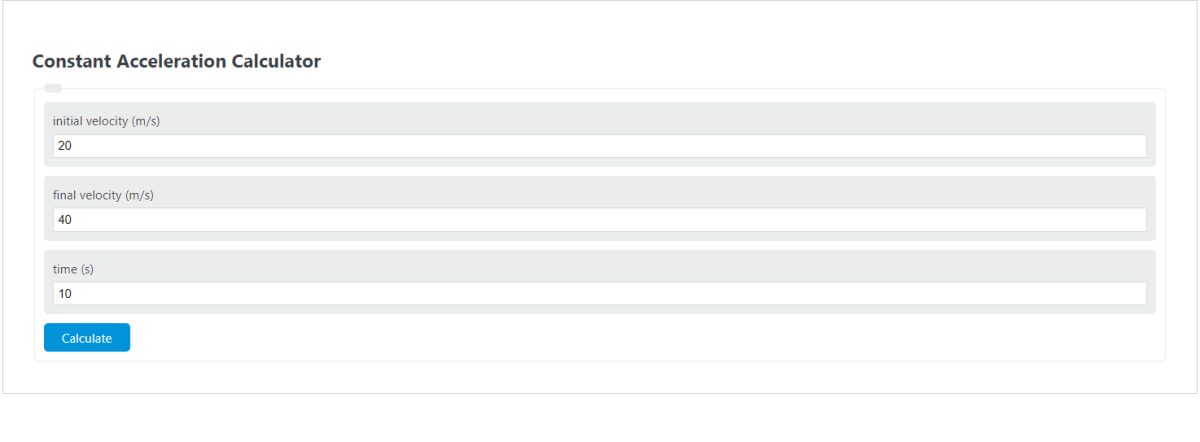Enter the initial velocity, the final velocity, and the time, into the calculator to determine the Constant Acceleration.
- All Acceleration Calculators
- Average Acceleration Calculator
- Magnitude of Acceleration Calculator
- Tangential Acceleration Calculator
- Rate of Acceleration Calculator
- Free Fall Acceleration Calculator
- Car Acceleration Calculator
- Average Angular Acceleration Calculator
- Acceleration To Impulse Calculator
Constant Acceleration Formula
The following equation is used to calculate the Constant Acceleration.
A = (Vf-Vi) / t
- Where A is the Constant Acceleration (m/s^2)
- Vi is the initial velocity (m/s)
- Vf is the final velocity (m/s)
- t is the time (s)
To calculate the constant acceleration, divide the change in velocity by the time.
What are the units for Constant Acceleration?
In the International System of Units, also known as SI units, the units for Constant Acceleration are m/s^2.
How to Calculate Constant Acceleration?
Example Problem:
The following example problem outlines the steps and information needed to calculate the Constant Acceleration.
First, determine the initial velocity. In this example, the initial velocity is calculated or measured to be 40 (m/s).
Next, determine the final velocity. For this problem, the final velocity is determined to be 20 (m/s).
Next, determine the time. In this case, the time is found to be 10 (s).
Finally, calculate the Constant Acceleration using the formula above:
A = (Vf-Vi) / t
Inserting the values from above and solving the equation with the imputed values gives: A = (40-20) / 10 = 2 (m/s^2)
